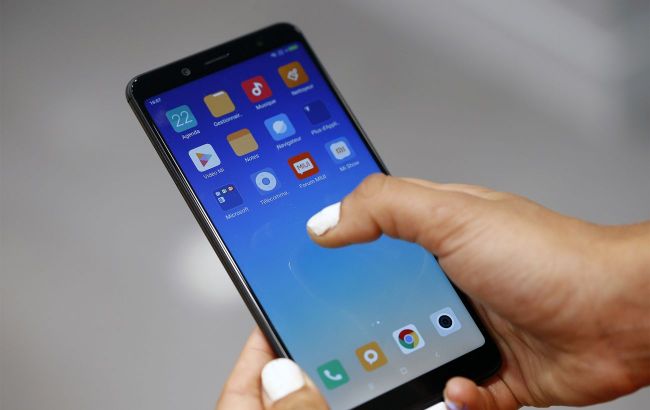How much RAM does Android smartphone really need in 2025
 How much RAM will an Android smartphone need in 2025 (photo: Getty Images)
How much RAM will an Android smartphone need in 2025 (photo: Getty Images)
In 2025, smartphones are becoming more and more powerful, but do you really need a huge amount of RAM? Manufacturers offer models with 12 GB, 16 GB, and even more, but the difference may not be so noticeable in everyday tasks, states Android Authority.
How Android manages memory
Any computing device, including your smartphone, uses RAM. It stores running programs, their data, and the operating system while the device is running. Ten years ago, Android devices had only 512 MB or 1 GB of RAM. However, over time, the amount of RAM has increased significantly.
In 2014, premium smartphones were equipped with 3 GB of RAM, and a couple of years later, 4 GB became the standard. Today, 4 GB is already considered the minimum allowable amount for a new device.
But no matter how much RAM your device has, it's a limited resource that needs to be allocated correctly.
Each new application you launch takes up a portion of RAM. Simple apps and games use a few hundred megabytes, while more complex games can consume up to 1 GB of RAM. The most demanding games take up to 1.5 GB of RAM.
With 4 GB of RAM, the device has enough space for several medium-sized applications or games running simultaneously with the OS. However, at some point, the free RAM runs out.
The swap file and its role in Android
When the RAM becomes full, the system uses the swapping method. On conventional computers, this is done using external storage (hard disk or SSD), where the least used data from RAM is moved.
When needed, this data is loaded back into RAM. This allows you to increase the amount of available memory, but it is slower than direct processing in RAM.
Android uses a slightly different approach. Instead of writing data to storage, the system compresses it and leaves it in RAM. This method is called zRAM, where "z" indicates the use of compression (similar to Unix/Linux). For example, if data can be compressed by 50 percent, then 128 KB of memory is reduced to 64 KB, freeing up the remaining 64 KB.
The Linux kernel, on which Android is based, treats zRAM as ordinary swap space. However, this data cannot be used directly - if necessary, it must be uncompressed and downloaded back, just like in a traditional paging file.
What happens when zRAM is full
Although zRAM helps you use memory efficiently, it is also a limited resource. If Android runs out of swap space, the system starts to force close running applications to free up memory.
This means that if you minimized an app, expecting to return to it later, it may be closed by the system to make room for a newly launched app.
Thus, the more RAM you have, the more applications can remain in memory at the same time, without the need to force them to close. If you are low on RAM, Android will unload apps from memory more often.
How much RAM does an Android smartphone need
Obviously, 4 GB is no longer enough for comfortable multitasking. Only the three or four most recently launched games will remain in memory. Office and system applications usually take up less space, so you can run five or six small programs at the same time, but some will restart when you switch between them. 6 GB of RAM partially solves this problem.
12 GB on the Galaxy S21 Ultra is a powerful and well-managed amount of memory. The RAM can hold up to 15 games at a time, including demanding ones, as well as several browser tabs. It is unlikely that the average user will encounter any problems with this level of multitasking.
Optimal amount of RAM
- 8-12 GB is the best option for most users
- 16 GB is more marketing than a real need
While the OnePlus 9 Pro is quite aggressive with memory management, the RAMBoost feature helps Android make better use of 8GB over time. However, on other devices, this amount may provide a smoother multitasking experience.
Keep in mind that local AI models (e.g. Gemini Nano) also affect the amount of memory required. Some models can work directly from the storage, but others require RAM to improve performance. A Google engineer noted that the Smart Reply model on the Pixel 8 Pro needs to be in RAM, which consumes a significant portion of resources.
Currently, most manufacturers are implementing entire AI functions, such as Galaxy AI and Pixel AI, so it is not surprising that flagships receive 12-16 GB of RAM. For example, the Pixel 9 has 50 percent more memory than its predecessor. Even Apple had to increase the amount of RAM in the iPhone 16 to support the new Apple Intelligence features.
What amount of RAM to choose
- Budget smartphones - 6 GB (minimum comfortable level)
- Mid-range and flagship segment - 8 GB (smooth multitasking + reserve for the future)
- Advanced users and AI functions - 12 GB (the best option for 2024)
- 16 GB - useful only for AI processing and complex smartphones, for most people, it is just a marketing ploy
We also wrote about what trends are expected for Android smartphones in 2025.

